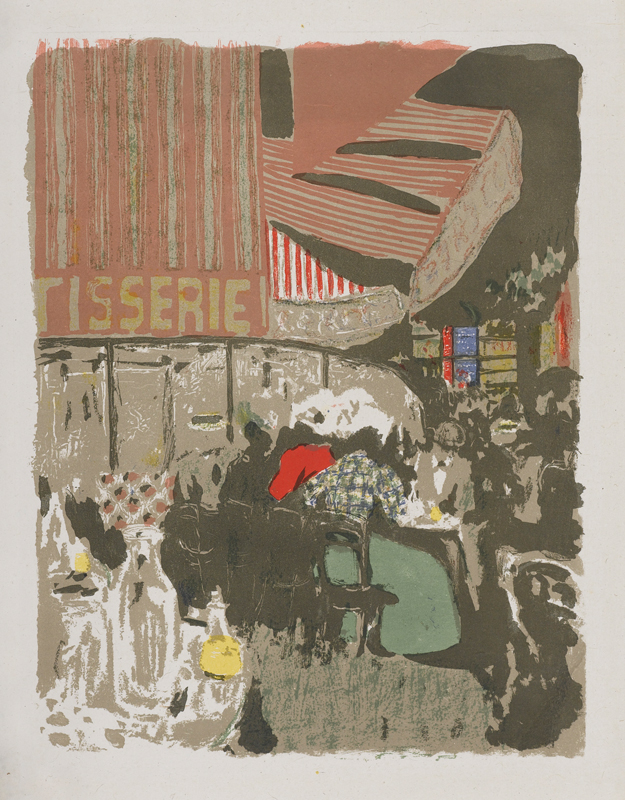Indoor/Outdoor: Vuillard’s "Landscapes and Interiors"
Édouard Vuillard (1868–1940) was among the most innovative artists in turn-of-the-century Paris, a friend and fellow traveler of Bonnard, Denis and Toulouse-Lautrec. Vuillard is best known for small-scale paintings of domestic interiors, populated by friends and family members and crowded with competing patterns: wallpapers, textiles, latticed windows. These patterns contribute to the emphatic flatness of his work, a sense that space recedes not into his pictures but up and across their surfaces, erecting a kind of screen or protective barrier between beholder and beheld.
Vuillard’s interest in patterned surfaces and domestic intimacy led him to produce many of his most compelling works around 1900 in two radically different formats: on the one hand, large-scale paintings, conceived as decorative ensembles and commissioned for private, domestic spaces; and, on the other, intimate color lithographs, produced in series and destined for broader circulation. In 1899 Vuillard undertook both his most celebrated lithographic series and his two largest decorative paintings. Remarkably, both projects are represented in the Norton Simon collections.
The Museum owns an intact edition of the lithographic album Landscapes and Interiors as well as the 14-foot-wide decorative masterpiece First Fruits. Splendidly cleaned and conserved at the J. Paul Getty Museum in 2014, First Fruits returns, transformed, to our galleries this October, having spent the spring in Paris at the Musée d’Orsay and the summer at the Art Institute of Chicago, where it was reunited with its pendant, Window Overlooking the Woods, 1899, for the first time in half a century. To complement the painting’s return to Pasadena and to celebrate the newly revealed beauty of its surface, this small exhibition explores Vuillard’s parallel contemporary practice as a printmaker.
As in Japanese woodblock printing, each of Vuillard's colors required a separately inked matrix. Hence, an image as richly colored as The Pastry Shop could require seven separate lithographic stones, inked and printed in precise sequence. To aid in this process, the artist turned to a master printer, Auguste Clot, who produced prints for such other members of the avant-garde as Bonnard, Redon, Toulouse-Lautrec and Munch. In Landscapes and Interiors, Clot helped Vuillard achieve effects of unprecedented subtlety and virtuosity. Form and space are described with color alone, applied in transparent, overlapping layers: green laid down over yellow, red laid over pink and so on.
For all their technical sophistication, though, Vuillard’s prints describe an ordinary world, places and people intimately known by the artist: a sunny avenue bustling with pedestrians, the corner table of a café, Vuillard’s mother sitting by her kitchen stove, his friends intent on a game of checkers. Despite their cozy familiarity, these scenes grant us no access to the inner thoughts of those they portray. Vuillard’s approach, in the end, is perhaps less intimate than intensely private, veiling the world he describes in pattern and color.
Financed and published in 1899 by the avant-garde dealer Ambroise Vollard, Landscapes and Interiors was a commercial failure. Contemporary collectors didn’t know what to make of these private images meant for public circulation. Twenty years after its printing, Vollard had still not sold out the original edition of 100 sets. Today, however, over a century later, individual prints from the series are so sought after that intact suites like the Norton Simon’s have become a rarity.

